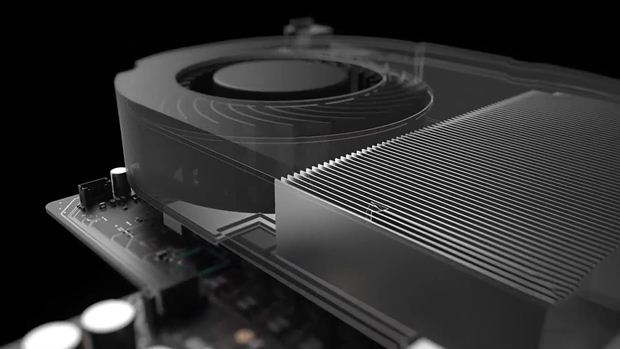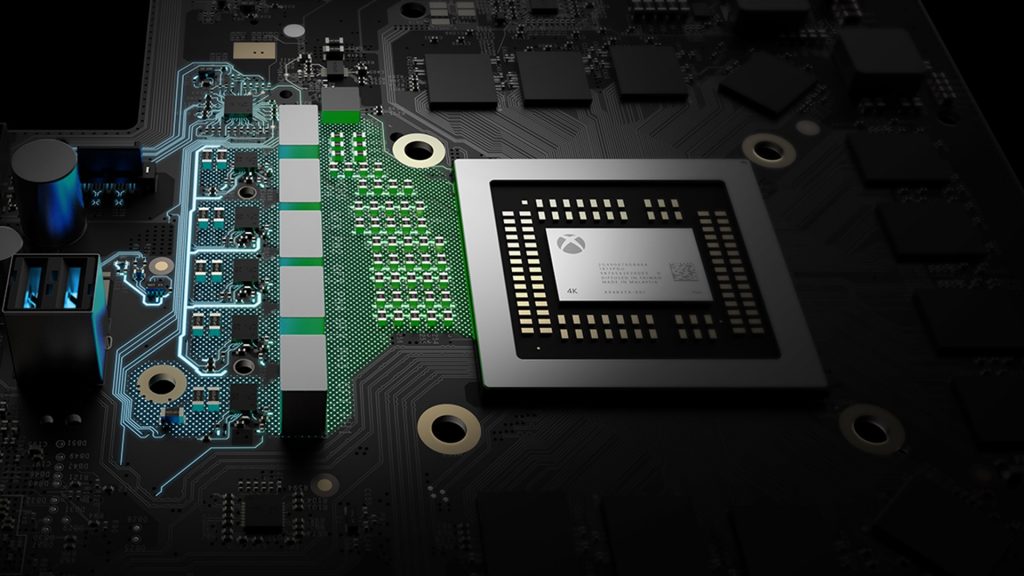
The Xbox One X is almost upon us. It almost feels like yesterday that the entire games industry was taken aback by this monster of a console. The most powerful console ever made is finally going to be released. With November 7th looming closer and closer–and as we head into AAA release season–we thought it’d be a good idea to take a closer look at the Xbox One X’s hardware. What makes the “world’s most powerful console” so special? Stay with us here for a three-part feature where we a deep dive into the Xbox One X’s hardware capabilities. Today, we’ll be looking at the One X’s GPU.
Microsoft has been consistently throwing around the 6TFLOPS technical jargon ever since they announced the console back at E3 2016. In fact, it has become a pretty important factor in Microsoft’s marketing venture for the new console and it’s something that it’s using as a leverage against the PS4 Pro.
The Xbox One X’s new GPU is arguably the most significant upgrade over the original Xbox One. The massive, 4x improvement in compute speaks clearly to Microsoft’s stated aim with the Xbox One X: to get existing Xbox One titles running at 4K (native, dynamic or checkerboard) with comparable visuals and performance. This isn’t a terribly high bar: the majority of AAA Xbox One titles run at either sub-1080p or with a dynamic framebuffer, with a 30 FPS framerate and pared down visual settings. What kind of hardware do you need for that kind of experience?
Before the Xbox One X’s hardware specs were officially outed, there was much speculation about the purported 6 TFLOP GPU. With AMD’s Polaris architecture and the RX 480 just weeks after the initial E3 2016 reveal of the One X (then still referred to as Project Scorpio), a Polaris-based graphics component at a high clockspeed was initially considered a possibility. There were, however, a few issues with this line of thinking. For starters, the RX 480 itself only offers up 5.8 TFLOPs of compute at stock clocks (1266 MHz).
Reviews and benchmarks of the RX 480 (including here on Gamingbolt) indicated that the RX 480 didn’t overclock particularly well. The console space is a much higher volume market than PC: if even the 480 often struggled to break past 6 TFLOPs, yields of golden Polaris chips that could clock past 1300 MHz would simply not have been high enough to be viable for a console GPU–to hit that 6 TFLOP advertising bullet point with Polaris 10, you’d need millions of chips that clock higher than the PC equivalent, have rock-solid stability, and don’t draw too much power–something the 480 attracted considerable flak for initially.
With Polaris out of the picture, speculation was rife about the One X’s GPU deriving from the Vega architecture. In the PC space, Vega was supposed to set right what Fiji did wrong–more than 4GB of VRAM (as a Fury owner, I feel the pinch even at 1080p), meaningful performance gains at lower resolutions, and, of course, performance parity with Nvidia’s best. While that last bit didn’t happen (Vega 64 puts up a good show against the GTX 1080–not the 1080 Ti), an underclocked Vega part would’ve made a good candidate for the Xbox One X’s GPU. Except, again, for excessive power consumption and the fact that Vega parts are very expensive to manufacture–AMD reportedly makes a $100 loss on every Vega 64 card sold.
Polaris 10 isn’t powerful enough and Vega 10 costs too much. This left many scratching their heads until Microsoft revealed their actual plan for the One X’s GPU: a fully-custom part, tailormade for the Xbox One X.
With the eighth-gen consoles and the PS4 Pro all using largely off-the-shelf hardware, the Xbox One X’s custom GPU came as a bit of a surprise, but it was the right solution to the cost to performance problem. Designing a custom GPU for a client (unsurprisingly) costs AMD quite a lot of money. However, sales volume in the console space is much higher than on PC: AMD will likely sell more Xbox One X GPUs than both Polaris and Vega desktop cards put together.
The One X’s custom GPU adopts features of both Polaris and Vega. With 40 compute units, it features about 10 percent more shader resources than Polaris 10 This, however, is offset by a slightly slower clockspeed, which tops out at 1172 MHz. By going wider, the One X’s custom GPU is able to hit 6 TFLOPs without running at clockspeeds that are unviable for Polaris 10 to achieve en masse. The GPU is 16 nm in size, includes 7000 million transistors, has a 384 bit memory bus, 2560 shader units, 32 ROPs and employs DirectX 12 and Shader Model 5.0.
The One X’s GPU also features higher memory bandwidth compared to Polaris 10, at 326 GB/S. This is crucial as bandwidth scales as resolution increases. While the One X features 12 GB of GDDR5, because this is shared pool, the GPU will only be able to access up to 9 GB at a given time. This isn’t necessarily a problem–in the PC space, VRAM utilization doesn’t often cross 6 GB, even at higher resolutions.
Lastly, while the One X isn’t based on the Vega architecture per se, numerous technical refinements and features carry over from Vega.
With the Xbox One X’s GPU, Microsoft has largely accomplished what it set out to do: enable its latest machine to run Xbox One quality games at 4K. Xbox One X demos, from Assassin’s Creed: Origins to Middle-Earth: Shadow of War to Forza 7 show that the One X is largely able to deliver on its promise, unlike the PS4 Pro. Granted, not all games will run at native 4K, but with continous SDK improvements, we should see more and more titles hitting that benchmark in the coming years. But perhaps what is Xbox One X’s biggest feature is the ability to automatically supersample the image quality for 1080p owners. Supersampling is automatically handled by the GPU, unlike the PS4 Pro which isn’t defined at system level, 1080p owners will benefit from a sharper, higher quality 1080p pixels.
While the GPU upgrade is certainly revelatory, the Xbox One X’s CPU upgrade simply isn’t as significant. A faster CPU would enable higher framerates in-game as well as new gameplay experiences, such as more refined physics and NPC interactions. However, again, the Xbox One X isn’t meant to be a ninth-gen console. Microsoft set out to make an Xbox One that runs games in 4K and the One X achieves that. The relatively slight CPU improvements enable a more stable framerate at 30 FPS. This is something we’ll be looking into in part two of this feature. Stay tuned!
















